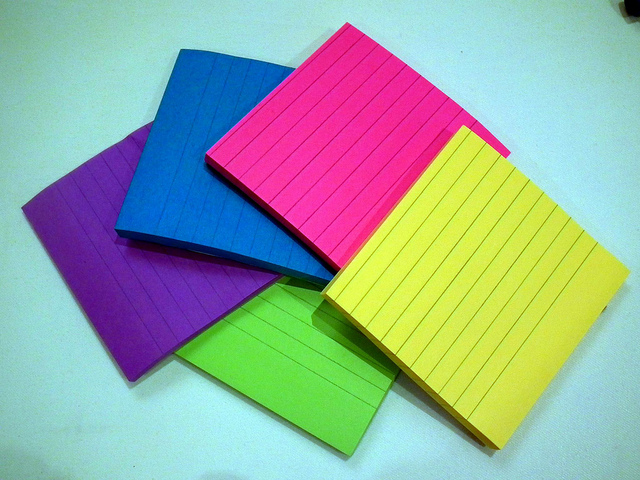I have been learning a lesson from History. Not from the annals of yore but from the History department at my school. They have been trialling the use of project based learning across Key Stages 3-5 and suggested some brilliant ideas at a recent training session. Magpie-like as ever, I have swiftly been trying them out in my own classroom with some very interesting results.
The main idea that I have trialled has been the Analysis Continuum. In the original History lesson, the lesson began with an essay-style question(e.g. Was there a cultural revolution in the 1960s?), each pair of students then drew a continuum on a sheet of sugar paper from YES to NO. They were then provided with a pile of evidence (photographs, illustrations, written evidence), which they had to sort and stick onto their continuum. A points-based system was used, with 1 point being awarded for a quotation, fact or statement, 3 points for an explanation and 10 marks for a well-reasoned conclusion.
I have so far tried this with my A level Language and Literature classes. And both times it was amazing! In the Language lesson, as with the History model, it proved to be an excellent way to impart a large amount of information (in this case attitudes to language change), without me having to be at the front of the class.
 It forced students to engage with the data and develop much more solid knowledge and understanding than if I had tried to ‘teach’ it to them. In the Literature class, I used it to do two things. Firstly to cover a significant chunk of the text and secondly to engage with a ‘How far do you agree with the statement’ exam question. The ‘data’ in this case consisted of extracts from the text and from critics and the activity really focused my students on the process of selecting evidence and weighing it up before deciding on their line of argument.
It forced students to engage with the data and develop much more solid knowledge and understanding than if I had tried to ‘teach’ it to them. In the Literature class, I used it to do two things. Firstly to cover a significant chunk of the text and secondly to engage with a ‘How far do you agree with the statement’ exam question. The ‘data’ in this case consisted of extracts from the text and from critics and the activity really focused my students on the process of selecting evidence and weighing it up before deciding on their line of argument.
So far I have used it with KS5 but I can envisage it working really well with my GCSE students in preparation for their reading controlled assessment essays as well. The one downside of this activity is that it takes a lot of preparation, as you need to search for, select and copy a pack of evidence for each pair of students in the class. However, once the lesson has started, you will be amazed at how little you have to do.
All of my students were enthusiastically engaged and motivated, without me having to do anything at all. In fact, I felt a bit like a spare part! The points system was great because not only did it help them to focus on the features of a well-reasoned argument but it also added a competitive element to the task.
So – the result of my History lesson? I have learned to stand back and do absolutely nothing in the classroom. Finally my students are doing more than I am!
Naomi Hursthouse



